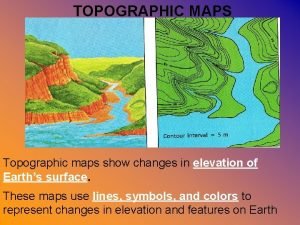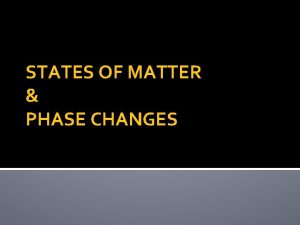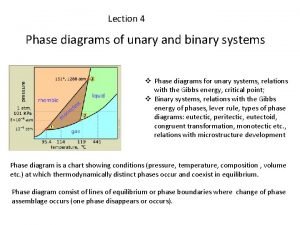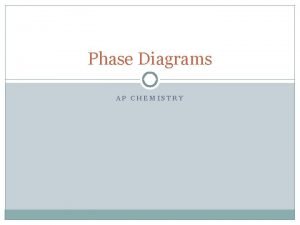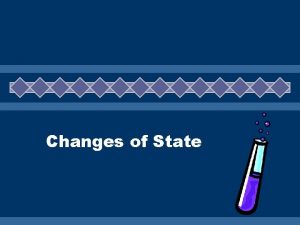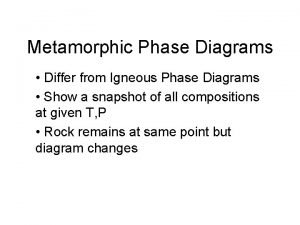Phase Diagrams l Show changes to phase of








- Slides: 8

Phase Diagrams l Show changes to phase of matter when both temperature and pressure altered

l A phase diagram can be used to understand how altering thermodynamic parameters influences the states/phases of matter a sample of a substance is in.

Typically: l Low temperature/high pressure conditions favor the solid state. l Moderate temperature/moderate pressure conditions favor the liquid state. l High temperature/low pressure conditions favor the gaseous state.

l Triple Point: l the temperature and pressure when all three phases of matter can exist.

Critical Point: l above this point the liquid and gaseous states above this point the of the substance are indistinguishable resulting in one “phase” called a “supercritical fluid”. l At temperatures above the critical temp. , the kinetic energy of the molecules so high that even at high pressures the sample cannot condense into the liquid phase.

Phase Diagrams: http: //www. youtube. com/watch? v=gb. UTff. Us. XOM

Phase Diagram for Water l Why is the solid-liquid slope different?

Water is Different! l The solid-liquid phase boundary in the phase diagram of most substances has a positive slope. This is due to the solid phase having a higher density than the liquid, so that increasing the pressure increases the melting temperature. l However, the solid-liquid phase boundary for water has a negative slope. This reflects the fact that ice is lower in density than liquid water (a well-known fact: ice floats), unlike most other substances which typically have denser solid phases.




